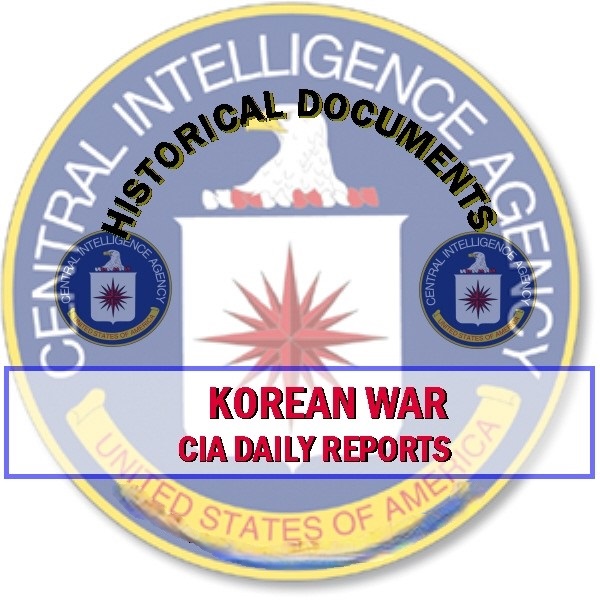
Description
Korean War: Main Events and Key Figures
Timeline of Main Events in the Korean War (Based on CIA Reports Excerpts):
- June 25, 1950: North Korean People’s Army (NKPA) of approximately 135,000 soldiers crosses the border into South Korea, where the Republic of Korea (ROK) Army has 98,000 soldiers.
- June 27, 1950: US President Harry S. Truman sends the 7th Fleet to the waters off Taiwan.
- June 28, 1950: NKPA forces capture Seoul, the capital of South Korea. The UN Security Council orders military sanctions against North Korea and calls upon its members to aid South Korea. The Soviet delegation boycotts the proceedings, allowing the resolution to pass.
- July 1, 1950: The first US ground combat troops, Task Force Smith (1st Battalion, 21st Infantry, 24th Infantry Division), arrive in Korea.
- July 7, 1950: General Douglas MacArthur proposes a massive US counterattack to drive the North Koreans out of South Korea, overthrow Kim Il-Sung’s regime, and unite Korea. This proposal faces opposition from most of the Joint Chiefs of Staff and George Kennan, who advocate for only pushing the NKPA back to the 38th Parallel.
- July 19, 1950: President Truman asks Congress for $10 billion to support the “police action” in Korea. He also addresses the American public via radio, clarifying there will be no full-scale mobilization like in WWII.
- August 7, 1950: UN forces halt the North Korean advance outside the city of Pusan.
- August 24, 1950: General MacArthur issues a public statement arguing for the vital importance of defending Taiwan against Communist China.
- August 26, 1950: President Truman orders the withdrawal of MacArthur’s statement on Taiwan, deeming it in conflict with US policy and its position in the UN.
- September 15, 1950: US forces under MacArthur land at Inchon on the Korean coast.
- September 27, 1950: President Truman approves MacArthur’s plan to cross the 38th Parallel and invade North Korea.
- October 19, 1950: Pyongyang, the capital of North Korea, is captured by United Nations forces.
- October 25, 1950: A large Chinese force (250,000 men), supported by Soviet jets, crosses the Yalu River into North Korea but withdraws after two weeks.
- November 24, 1950: General MacArthur launches his final offensive towards the Yalu River, the border with China.
- November 25, 1950: Chinese troops re-cross the Yalu River and attack MacArthur’s forces, forcing a retreat south.
- November 27, 1950: The Battle of the Changjin (Chosin) Reservoir begins. The encircled 1st Marine Division fights its way south to Hungnam.
- December 20, 1950: President Truman, frustrated by MacArthur’s public statements favoring all-out war with China, issues an order requiring Department of Defense approval for any public statements concerning military policy.
- December 24, 1950: The Hungnam Operation is completed, with the US Navy evacuating 105,000 US and ROK forces.
- December 25, 1950: The United Nations calls for an armistice in Korea. MacArthur advocates for all-out war against Communist China with support from Chiang Kai-shek’s forces in Taiwan.
- January 4, 1951: Chinese troops recapture Seoul.
- March 27, 1951: The US Eighth Army reaches the 38th Parallel. Intelligence suggests a build-up of Chinese forces for another major offensive.
- April 11, 1951: President Truman dismisses General MacArthur from his command and replaces him with General Matthew Ridgeway.
- June 23, 1951: Soviet UN ambassador Jacob Malik proposes ceasefire negotiations between communist and UN forces along the 38th Parallel.
- July 10, 1951: Ceasefire talks begin in Korea, with the 38th Parallel again becoming a line of demarcation as a stalemate develops.
- June 6-14, 1952: Operation COUNTER takes place, with the 45th Infantry Division launching attacks to establish patrol bases in the Old Baldy area. Fierce fighting occurs for Outpost Eerie on Hill 191.
- July 23, 1952: FEAF and Navy planes conduct massive air strikes against North Korea’s hydroelectric power grid, causing widespread blackouts and impacting power supply in northeast China.
- April 16-18, 1953: The first Battle of Pork Chop Hill results in heavy casualties for the US 7th Infantry Division.
- July 6-10, 1953: The second Battle of Pork Chop Hill leads to the order for the US 7th Infantry Division to evacuate its defensive positions.
- July 27, 1953: The United States, North Korea, and China sign an armistice, ending the Korean War but without a permanent peace treaty between North and South Korea.
Cast of Characters:
- Harry S. Truman: (1884-1972) The 33rd President of the United States (1945-1953). He made the decision to intervene in the Korean War, sent the 7th Fleet to Taiwan, approved the crossing of the 38th Parallel, and ultimately dismissed General MacArthur.
- Douglas MacArthur: (1880-1964) A five-star general in the US Army. He served as the Commander of UN Forces in Korea. He advocated for a more aggressive approach, including potentially attacking China and using Nationalist Chinese forces, which led to his dismissal by President Truman.
- Kim Il-Sung: (1912-1994) The leader of North Korea from its founding in 1948 until his death. The initial North Korean invasion of South Korea was aimed at unifying the peninsula under his communist regime.
- George Kennan: (1904-2005) An American diplomat and historian known for his “Long Telegram” and the concept of containment. He opposed the plan to cross the 38th Parallel and overthrow Kim Il-Sung’s regime, arguing for a more limited objective of restoring the status quo.
- Mao Tse-tung: (1893-1976) The Chairman of the Communist Party of China. His regime was not recognized by the UN at the time, leading to the Soviet boycott of the Security Council vote on Korean War sanctions. China’s intervention in the war significantly altered its course.
- Chiang Kai-shek: (1887-1975) The leader of the Nationalist Chinese government, which had retreated to Taiwan after the communist victory in the Chinese Civil War. MacArthur favored using his forces against Communist China.
- Matthew Ridgeway: (1895-1993) A US Army general who replaced MacArthur as the Commander of UN Forces in Korea in April 1951.
- Jacob Malik: (1906-1980) The Soviet Union’s UN ambassador who, in June 1951, proposed ceasefire negotiations in Korea, a significant step towards ending the active fighting.
Korean Wars CIA Day-to-Day Reports
5,500 pages, 891 documents, composed of various intelligence products produced by the CIA on a daily basis covering the Korean War.
The documents date from June 27, 1950 to December 31, 1953. This collection contains some material that was not declassified until March 2010.
The material includes Daily and Weekly situation reports, Daily Digest of Significant Traffic, and Current Intelligence Bulletins.
Significant events occurring during the creation of these documents include:
June 25, 1950 – A force of approximately 135,000 soldiers of the North Korean People’s Army (NKPA) crossed the border with South Korea; the Republic of Korea (ROK) Army contained 98,000 soldiers.
June 27, 1950 – President Truman sends the 7th Fleet to the waters off Taiwan.
June 28, 1950 – NKPA forces capture Seoul. The UN Security Council ordered military sanctions against North Korea. The United Nations calls upon its members to come to the aid of South Korea. The proposal only wins the approval of the Security Council because the Soviet delegation is boycotting its proceedings to protest the U.N.’s failure to recognize Mao Tse-tung’s regime as the legitimate government of China.
July 1, 1950 – The first U.S. ground combat troops, Task Force Smith composed of the 1st Battalion, 21st Infantry, and 24th Infantry Division), arrive in Korea.
July 7, 1950 – General MacArthur proposes to use U.S. troops to launch a massive counterattack against the North Koreans that would not only drive them from South Korea, but would overthrow Kim Il-Sung’s regime in the North and unite all of Korea under a single government. Most of the Joint Chiefs of Staff opposes this, as does George Kennan, who insists that U.S. forces should only drive the North Koreans back across the 38th Parallel.
July 19, 1950 – Truman appears before Congress asking for $10 billion to support the “police action” in Korea. He follows this up with a radio address to the American public, but he makes it clear that there will be no full-scale mobilization as there had been in World War II.
August 7, 1950 – U.N. forces halt North Koreans outside the city of Pusan.
September 15, 1950 – U.S. forces under MacArthur land at three separate locations on the Korean coast near Inchon.
September 27, 1950 – Truman approves MacArthur’s plan to cross the 38th Parallel, invading North Korea.
August 24, 1950 – MacArthur sends a public statement to a national meeting of the Veterans of Foreign Wars in which he argues that Taiwan is vital to U.S. national defense and must be defended at all costs against Communist China.
August 26, 1950 – Fearing that MacArthur’s statement to the Veterans of Foreign Wars might be interpreted by China as a provocation, Truman orders that it be withdrawn, stating that the general’s position on Taiwan was “in conflict with the policy of the United States and its position in the United Nations.”
October 19, 1950 – Pyongyang, the capital of North Korea, is taken by United Nations forces.
October 25, 1950 – A Chinese force of 250,000 men, supported by Soviet jets, cross the Yalu River into North Korean territory, but withdraw back into China two weeks later.
November 24, 1950 – MacArthur launches his final offensive toward the Yalu River, the border between North Korea and China.
November 25, 1950 – Chinese troops cross the Yalu River again, this time attacking MacArthur’s forces, forcing them to retreat back toward South Korea.
November 27, 1950 – Beginning of the Battle of the Changjin (Chosin) Reservoir. The encircled 1st Marine Division fights its way southward from the Chosin Reservoir to the port city of Hungnam.
December 20, 1950 – Angered by repeated statements by MacArthur in favor of all-out war against Communist China, Truman issues an order forbidding the release of any “speech, press release, or other public statement concerning military policy” without approval from the Department of Defense.
December24, 1950 – Hungnam Operation is complete; the U.S. Navy evacuates 105,000 U.S. and Republic of Korea (ROK) forces.
December 25, 1950 – The United Nations calls for an armistice in Korea; MacArthur calls for all-out war against Communist China with assistance from Chiang Kai-shek’s Nationalist Chinese forces in Taiwan.
January 4, 1951 Chinese troops capture Seoul, capital of South Korea.
April 11, 1951 Truman dismisses MacArthur from his command. He is replaced by General Matthew Ridgeway.
March 27, 1951 – Eighth Army reaches the 38th Parallel. Resistance continues to be light, but intelligence indicates that the Chinese are massing their forces for another major offensive.
June 23, 1951 – Soviet UN ambassador Jacob Malik calls for communist and UN forces to negotiate a cease fire with armies separated along the 38th parallel.
July 10, 1951 – Ceasefire talks begin in Korea. The 38th parallel had again become a line of demarcation, a stalemate developed around the battle lines on the peninsula.
June 6-14, 1952 – Operation COUNTER. The 45th Infantry Division launches a two-phased series of attacks to establish 11 patrol bases in the Old Baldy area. Second and 3rd Battalions, 180th Infantry Regiment, fight fiercely for Outpost Eerie on Hill 191, which is counterattacked by two Chinese battalions.
July 23, 1952 – FEAF and Navy planes launch massive air strikes against North Korea’s hydroelectric power grid, causing an almost complete blackout for more than two weeks. Results of strikes extend into northeast China, which loses nearly 25 percent of its electrical requirements
April 16-18, 1953 – Battle of Pork Chop Hill. The 17th and 31st Infantry Regiments of the 7th Infantry Division hit hard and suffer heavy casualties.
July 6-10, 1953 – Battle at Pork Chop Hill. The 7th Infantry Division is ordered to evacuate its defensive positions after five days of fighting.
July 27, 1953 – The United States, North Korea and China sign an armistice, which ends the war but fails to bring about a permanent peace. To date, the Republic of Korea (South) and Democratic Peoples’ Republic of Korea (North) have not signed a peace treaty.










Related products
-
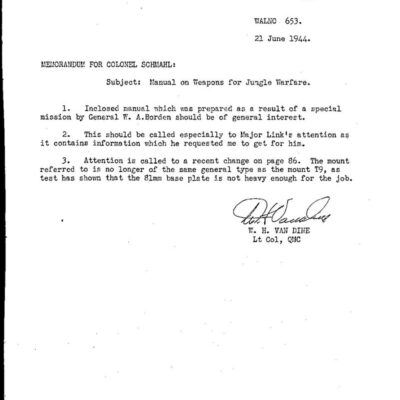
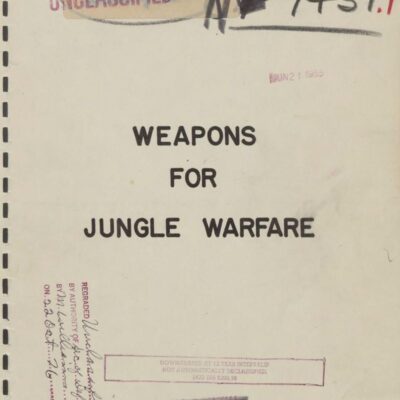
World War II Manual on Weapons for Jungle Warfare (1944)
$1.99 Add to Cart -
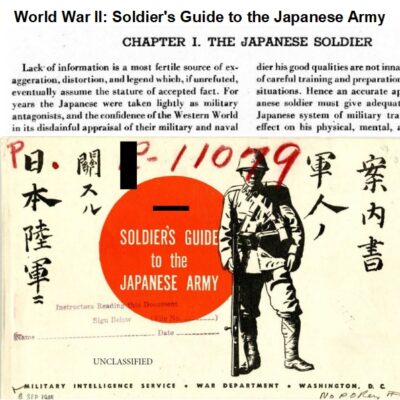

World War II: A Soldier’s Handbook on the Japanese Army
$3.94 Add to Cart -
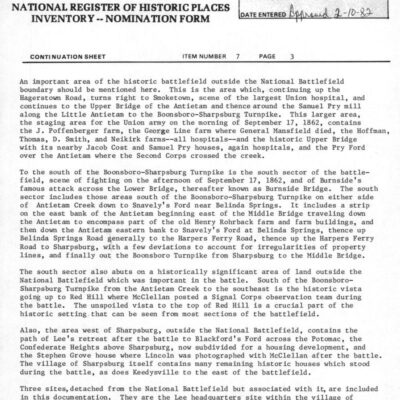
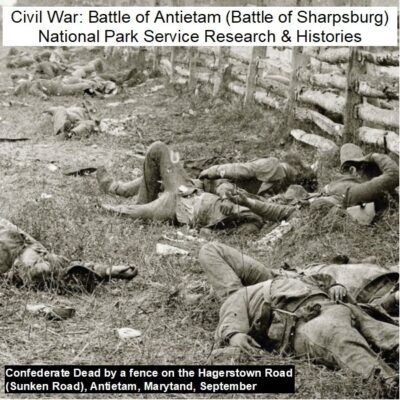
Civil War: Battle of Antietam (Sharpsburg) – National Park Service Archives
$9.99 Add to Cart -
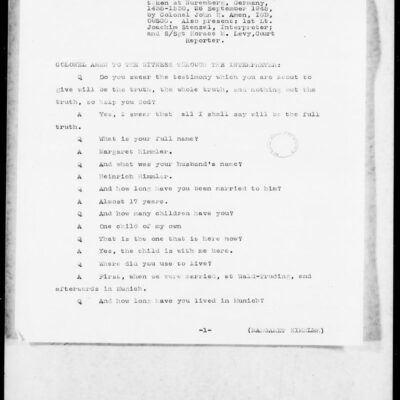
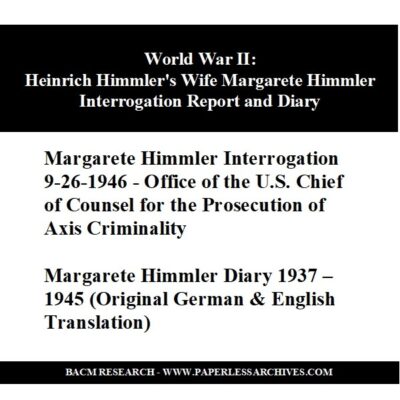
World War II: Interrogation Report and Diary of Margarete Himmler, Wife of Heinrich Himmler
$3.94 Add to Cart